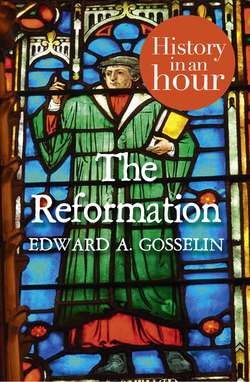Читать книгу The Reformation: History in an Hour - Edward Gosselin A - Страница 5
ОглавлениеIntroduction
From the time of St Peter to AD 1521, the Roman Catholic Church was the only ‘official’ Christian church in western Europe. It provided the only means through which a person could expect to have access to God and gain entry into Heaven. The Church, however, was not immune to corruption, and there had been several attempts to rein in Church leaders who were often distracted from their pastoral duties with more earth-bound interests such as the gathering of power and wealth. Yet the one Church remained intact and unchanged in its teachings and doctrines throughout the Middle Ages into the Renaissance and up to the Reformation.
In the sixteenth century, Martin Luther began his feverish quest for salvation and Church reform, and started an evangelical movement which spread beyond the borders of sixteenth-century Germany. This movement is the first of three distinct developments of the Protestant Reformation. Luther’s (and others’) evangelical revolution evolved into personal causes for rulers and monarchs, who sought to impose their religious will upon their subjects, and signified a second phase, the Reformation ‘from above’. During the Reformation’s third, confessional (religious wars) period, in which princes, territories and national churches conducted wars of belief, Protestants migrated to and colonized new settlements, and created their own methods of preserving the faith.
The era of the Protestant Reformation begins in 1517 and, by 1648, becomes fully shaped in Europe as a movement embodying several new independent churches, revolutionized systems of belief and geopolitical changes that affected monarchs and their subjects throughout the region. By the mid-seventeenth century, the original one Church had become several different churches without any hope of reuniting.
